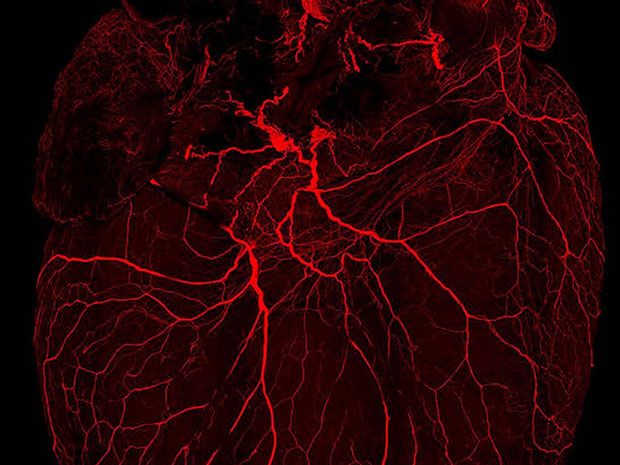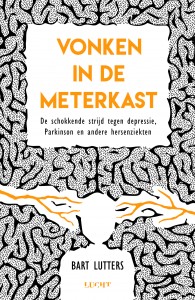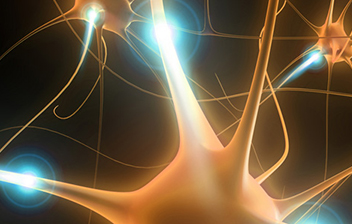About the Bioelectronics blog
In this weblog you can find the latest information on ongoing activities in and contributions by the Section Bioelectronics of Delft University of Technology. In this group we are working on Biosensors, Organs on Chip, Flexible Implants, Artificial Retinas, Spinal-Cord Implants, Medical Body-Area Networks, Energy Harvesting, Neurosensing Devices, Neurostimulators, Electroceuticals and Bioelectronic Medicines
-
Recent Posts
- Meer informatie over tinnitus en het Delft Tinnitus Device
- Met een klemmetje en een koptelefoon van het gekmakende oorsuizen af
- Technologie waar je stil van wordt: een apparaat tegen tinnitus
- Luister terug: Oorzaken, ervaringen en een oplossing? ‘Kwestie van geluid’
- Het medicijn van de toekomst is bio-elektronisch
Categories
- Bioelectronic Medicine (9)
- Brain-Machine Interfaces (32)
- Education (60)
- Electronics (56)
- Energy Harvesting (16)
- General (248)
- Implantables (9)
- Medical Body Area Networks (15)
- Music (5)
- Neonatology (9)
- Neurostimulation and Neuromodulation (71)
- Pacemakers (16)
- Technology for Neuroscience (1)
- Understanding the Brain (67)
- Wearables (3)
Archive
Meta
Disclaimer
De meningen ge-uit door medewerkers en studenten van de TU Delft en de commentaren die zijn gegeven reflecteren niet perse de mening(en) van de TU Delft. De TU Delft is dan ook niet verantwoordelijk voor de inhoud van hetgeen op de TU Delft weblogs zichtbaar is. Wel vindt de TU Delft het belangrijk - en ook waarde toevoegend - dat medewerkers en studenten op deze, door de TU Delft gefaciliteerde, omgeving hun mening kunnen geven.
Category Archives: Understanding the Brain
EWI alumni, bedankt!
Posted in Education, Electronics, General, Neonatology, Understanding the Brain
Will the Terminator come to life?
Humankind in 2050
Elon Musk recently launched his Neuralink company. What Musk aims to achieve is actually a good indication of what tomorrow’s technology could look like. He wants to make direct contact with our brains in order to connect people with each other. The exchange of information without any speech or typing. That technology, in which electronics are applied within our brains, is now being developed.
Will humans become cyborgs by 2050? If they do, is that such a bad thing? Wouter Serdijn, Professor in Bio-Electronics at TU Delft, is thinking out loud.

Wouter Serdijn
What is going to happen actually makes logical sense from an evolutionary perspective. There will be further integration of humans and technology. Basically, people are large electrochemical machines. The slow process of information exchange within our bodies takes place by means of hormones and rapid exchange of information is achieved through electricity and neurotransmitters. It is possible to use electronics to influence the interaction between the two.
It is now already standard practice for people born deaf to be given a cochlear implant. By 2050, blind people will be fitted with retinal implants as a rule. It will look much better than it does today. Currently, it is still a type of camera and you can clearly tell that someone is disabled, but by then it will be fully integrated into the eyeball.
By 2050, we will have an even better understanding of how the human brain works. This will enable us to engage in improved interaction with the brain in order to offer even better treatments. Actually, the way we currently suppress medical disorders is quite cruel. This is why I hope to see a fully-fledged alternative for the chemical medicines that come with an arsenal of nasty side-effects. That is why we are, for example, working on injectable electronic medicines. That has to be the way forward.
My primary focus is on improving quality of life for people who are slightly disadvantaged from a medical perspective. The idea of using technology to improve ourselves, or even make ourselves bigger, is quite attractive. Even if there is no real medical need for it, as Elon Musk and others envisage. We will probably become integrated with the internet. What will the value of an individual person then be? Will privacy still exist in the collective? These are issues that we must monitor carefully.
We need to watch out for horror-film scenarios, without becoming technophobes. Yes, it is possible to influence all sensory, motor and empathic processes electrically. It is already possible to achieve it chemically and people seem to have few issues with that. Fifty years ago, people were still afraid of a television that could rewind. Yet we are now embracing interactive TV. We are going fast forward into the future. By 2050, I hope that we all live much more pleasant lives and grow old with integrated electronics. Then, looking back, you will no longer wish to return to 2017.
Text: Marieke Roggeveen
Photo: Marieke Roggeveen
Komt de Terminator tot leven?
De mens in 2050
Elon Musk lanceerde onlangs zijn bedrijf Neuralink. En wat Musk wil is een goede indicatie van de technologie van de toekomst. Hij wil direct contact maken met onze hersenen en daarmee mensen met elkaar verbinden. Informatie-uitwisseling zonder spraak of typen. Die technologie, waarbij elektronica in onze hersenen wordt geïmplementeerd, is nu in de maak.
Is de mens een cyborg in, zeg, 2050? En is dat erg? Wouter Serdijn, Professor in Bio-Elektronica aan de TU Delft, vraagt het zich hardop af.

Wouter Serdijn
Wat er gaat gebeuren is eigenlijk evolutionair best logisch. Er gaat een verdere integratie van mens en technologie plaatsvinden. De mens is een grote elektrochemische machine. De langzame informatie-uitwisseling in ons lichaam vindt plaats door middel van hormonen; de snelle informatie-uitwisseling door middel van elektriciteit en neurotransmitters. Je kunt de interactie tussen die laatste twee beïnvloeden met elektronica.
Zo is het nu al standaard dat mensen die doof geboren worden een cochleair implantaat krijgen. In 2050 krijgen mensen die blind zijn standaard een retinaal implantaat op hun netvlies. Dat zal er veel beter uit zien dan vandaag. Het is nu nog een soort van camera, je ziet duidelijk dat iemand gehandicapt is, maar tegen die tijd zit het volledig in de oogbol.
We zullen in 2050 nog beter begrijpen hoe onze hersenen werken. En daardoor dus beter de interactie aan kunnen gaan met onze hersenen om betere behandelingen te kunnen bieden. Eigenlijk worden medische defecten nu op een zeer brute manier onderdrukt. Ik hoop daarom op een volwaardiger alternatief voor chemische geneesmiddelen, die hebben echt een batterij aan bijwerkingen. We werken daarom bijvoorbeeld aan injecteerbare elektronische medicijnen. Die kant moet het opgaan.
Ik richt me vooral op het verbeteren van de kwaliteit van leven bij mensen die medisch wat minder fortuinlijk zijn. Het zal zeker ook aantrekkelijk worden om onszelf via technologie te verbeteren. Of vergroten. Ook wanneer er geen medische noodzaak voor is, zoals Elon Musk en anderen dat willen Waarschijnlijk worden we dan geïntegreerd met het Internet. Wat is dan nog de waarde van de individuele mens? Bestaat er dan nog privacy in het collectief? Dat moeten we goed in de gaten gaan houden.
We moeten waakzaam zijn voor filmscenario’s, maar vooral geen technofoben worden. Ja, je kunt alle sensorische, motorische en empatische processen elektrisch beïnvloeden. Dat kan nu ook al, chemisch, en daar lijken mensen minder problemen mee te hebben. In de jaren 50 nog was men bang voor een televisie die kon terugkijken. Nu omarmen we onze interactieve tv. We gaan fast forward naar de toekomst. In 2050 hoop ik dat we allemaal op een veel prettigere manier leven en oud worden met geïntegreerde elektronica. Dan wil je echt niet meer terug naar 2017.
Tekst: Marieke Roggeveen
Foto: Marieke Roggeveen
Acting on the potential of action potentials: will bioelectronic medicines be the next biologics?
Article in The Pharmaceutical Journal, 9 DEC 2016,
Bioelectronic medicine is a new approach to treating major chronic diseases that could give doctors and patients alternatives to costly mainstream medicine and may become as commonly prescribed as chemical or biological drugs. Some researchers and pharmaceutical companies are already taking this potential new class of treatments seriously and, as promising results emerge, others are expected to follow.
Imagine a prescription from your doctor, not for tablets but for a tiny electrical device implanted on a nerve in your neck. The device will monitor and treat your condition — whether it is diabetes, asthma, hypertension or even cancer — by modulating electrical impulses.
Pharmaceutical drugs can be highly effective, but don’t work for everyone. They tend to work systemically, often causing a variety of adverse effects, and rely on patient adherence. As a result, there are still countless chronic diseases that remain untreated or poorly treated by mainstream medicine. Enter bioelectronic medicines, a new group of therapies that work by transmitting electrical impulses along nerve fibres, rather than through molecular mechanisms. Tapping into the electrical wiring of the body, bioelectronic medicines — also called electroceuticals — could transform pharmaceutical treatment of many chronic diseases, providing an alternative or adjunct to traditional chemical or biological drugs. With technical advances and burgeoning research activity, this revolutionary approach to treating disease is starting to become a reality.
…
“Drugs are based on exercising the chemical component of our nervous systems and tend to act very globally. Electroceuticals act locally,” explains Wouter Serdijn, a bioelectronics researcher at Delft University of Technology in the Netherlands and University College London. “Moreover, contrary to drugs, electroceuticals have an instantaneous effect and their effect is reversible. It takes quite some time for drugs to [exert] their beneficial effect and, as a consequence, it takes quite some time to be able to administer the right dose.”

Source: Courtesy of Wouter Serdijn
…
It’s a tall order. “The problem with nerves is that they usually are grouped in bundles and they carry information to and from the brain, from and to the organ; often to more than one organ or to more than one part of an organ,” explains Serdijn. “So stimulation and recording nerves becomes a delicate and highly selective task.”
…
Serdijn agrees: “I think pharma perceives electroceuticals as a game changer.”
U.S. Government Awards $20 Million for Electroceuticals Research

Image: Pradeep Rajendran and Rosemary Challis/Shivkumar Lab/UCLA
The U.S. National Institutes of Health (NIH) wants better ways to treat disease with electrical stimulation, and last week announced the recipients of more than US $20 million in funding for the field. The awards aim to improve maps of the peripheral nervous system—the body’s electrical wiring—and generate sophisticated systems that can hack into its codes.
The funding is part of a $248 million, seven-year program that the NIH Common Fund announced in 2014. Last week’s awards mark the start of the core of that program. Up to $39 million in additional awards will be announced next year. The agency will begin accepting applications for those awards by early 2017, says NIH’s Gene Civillico, who heads up the funding program, called SPARC, or Stimulating Peripheral Activity to Relieve Conditions.
Researchers have for decades been electrically stimulating the brain, the spinal cord and peripheral nerves in an attempt to alleviate ailments such as Parkinson’s disease, epilepsy, pain, and paralysis. The technique can work as well or better than drugs, leading some to dub the field “electroceuticals.” Several companies sell such devices with approval from the U.S. Food and Drug Administration (FDA).
Those tools have seen some success. In clinical studies they have been shown to reduce seizures and symptoms of rheumatoid arthritis, and help people regain bladder control and muscle mobility.
The tools on the market are surprisingly simplistic. In most systems, a pulse generator blindly sends electrical impulses along a lead to electrodes that are placed on a nerve. With enough intensity, the stimulation causes neurons to fire. Those induced impulses, called action potentials, are just like the ones produced naturally by the body. The signals travel along neural networks in different temporal patterns, communicating with the body and influencing chemical and biological processes.
The problem with current devices is that they shoot electrical impulses broadly at nerves in patterns that don’t begin to mimic the body’s natural code. It’s miraculous that the body responds at all to these crude signal patterns. And often the devices activate entire nerves, rather a subset of particular fiber groups, wasting battery power and creating side effects.
That leaves a lot of room for improvement—an exciting prospect for engineers. Many more diseases could be treated with electrical stimulation if the devices were designed more elegantly, say leaders in the field. New designs for electrodes and other tools must better interface with the body and activate nerves that are currently out of reach. And such tools must selectively activate key fibers within the nerve that perform specific functions, these leaders say.
To do that, we need a better understanding of the anatomy of neural circuits—where they are and what they do. We also need to know the precise signal patterns neural circuits use to communicate with organs. In other words, if we want to hack the system, we need maps and codes.
Those are the kinds of breakthroughs NIH Common Fund intends to stimulate with the awards. “We’re seeing a fair bit of clinical success, but with fairly primitive understanding of what the stimulation is actually doing,” says Civillico.
The awards focus on treating conditions such as heart disease, asthma and gastrointestinal disorders. The program’s leaders want researchers to focus on peripheral nerves—those that connect the brain and spinal cord with the rest of the body—because of their potential direct effects on organ systems and their accessibility. (The brain is far more complex, and harder to map.)
Wat te doen wanneer je lijdt aan ernstige tinnitus?

Foto en artwork: Marleen Serdijn
Regelmatig ontvang ik een noodkreet van mensen die zelf ernstig lijden aan tinnitus (oorsuizen) of iemand in de nabije omgeving hebben die lijden aan deze pijnigende aandoening. Veelal is de vraag dan of ik iets voor hen kan doen. De patiënten zelf zijn vaak ten einde raad.
Ik ben zelf geen arts, maar technisch specialist, en ik kan dus niet veel meer bieden dan een luisterend oor en advies geven over wie hen mogelijk wel zou kunnen helpen. Omdat ik daarbij vaak dezelfde dingen herhaal, dacht ik dat het goed is om een paar suggesties op deze weblog te vermelden.

Dirk de Ridder
In mijn ogen is een van de autoriteiten op het gebied van het begrijpen en behandelen van tinnitus professor Dirk de Ridder. Voorheen was Dirk verbonden aan het Universitair Ziekenhuis Antwerpen, maar sinds 2012 is hij verbonden aan de Dunedin School of Medicine, onderdeel van de Universiteit van Otago in Nieuw-Zeeland. Dirk is in mijn ogen iemand met een groot begrip van het menselijk brein, een uitstekend neurochirurg en expert op het begrijpen en behandelen van tinnitus. Zie: http://www.otago.ac.nz/dsm/people/expertise/profile/?id=1297.

Berthold Langguth
Omdat Nieuw-Zeeland nu eenmaal niet naast de deur is en ik graag mensen een bereisbaar alternatief voor zijn kennis en kunde wil aanraden, vroeg ik Dirk wie in Europa een goed aanspreekpunt zou zijn voor mensen met ernstige tinnitus. Hij raadde mij professor Berthold Langguth van de Universiteit van Regensburg in Duitsland aan. Zie: http://www.uni-regensburg.de/medizin/psychiatrie-psychotherapie/forschung/neuroplastizitaet-und-hirnstimulationsverfahren/index.html.
In Nederland kunt u eventueel terecht bij de KNO-afdeling van Maastricht UMC+: zie http://kno.mumc.nl/tinnitus.
Mijn advies aan tinnitus-patienten die ten einde raad zijn: Laat u vooral niet met een kluitje in het riet sturen of met het magere advies dat u er maar mee dient te leven. Hopelijk gebeurt dit niet bij bovenstaande mensen/groepen.
Tenslotte: tinnitus gaat meestal niet vanzelf over en het is raadzaam om ruim binnen 2 jaar na de eerste pijnlijke en aanhoudende symptomen een behandelend arts te hebben gevonden.
Ik wens u veel succes.

Wouter Serdijn
Wouter A. Serdijn, PhD, F-IEEE
Visiting Honorary Professor
University College London
Department of Electronic & Electrical Engineering
Sensors Systems and Circuits
Full Professor of Bioelectronics
Head Section Bioelectronics
Delft University of Technology
http://bioelectronics.tudelft.nl/~wout
http://bioelectronics.tudelft.nl
Posted in General, Understanding the Brain
Vonken in de meterkast
De schokkende strijd tegen depressie, Parkinson en andere hersenziekten
 Ons brein is een meterkast, een netwerk van kabels dat het lichaam van stroom voorziet. Soms ontstaat er kortsluiting – kabels slijten, stoppen slaan door – met hersenziekten als gevolg. Op dat moment kan elektriciteit uitkomst bieden. Depressie, Parkinson en chronische pijn; met een stroomstoot kunnen steeds meer mensen van hun klachten worden afgeholpen.
Ons brein is een meterkast, een netwerk van kabels dat het lichaam van stroom voorziet. Soms ontstaat er kortsluiting – kabels slijten, stoppen slaan door – met hersenziekten als gevolg. Op dat moment kan elektriciteit uitkomst bieden. Depressie, Parkinson en chronische pijn; met een stroomstoot kunnen steeds meer mensen van hun klachten worden afgeholpen.
In Vonken in de meterkast laat Bart Lutters ons kennismaken met de fascinerende wereld van de neurostimulatie; van de allereerste vonk tot de nieuwste wetenschappelijke ontwikkelingen. Wie is er ooit op het idee gekomen om een patiënt onder stroom te zetten? Welke ziektes kunnen er met stroom behandeld worden? En wat doet zo’n stroomstoot eigenlijk met onze hersenen? Vonken in de meterkast gaat over elektrische vissen en op-afstand bestuurbare stieren, robotarmen en gereanimeerde ledematen, maar vooral over hoe stroom ons al duizenden jaren beter maakt.
 Bart Lutters is zijn artsenopleiding aan het afronden (Selective Utrecht Medical Master) en wordt gefascineerd door alles wat met de hersenen te maken heeft. Hij heeft diverse prijzen gewonnen voor zijn onderzoek naar epilepsie en schrijft regelmatig over de geschiedenis van de geneeskunde in onder andere Brain, het toonaangevende wetenschappelijke tijdschrift op het gebied van de neurowetenschappen.
Bart Lutters is zijn artsenopleiding aan het afronden (Selective Utrecht Medical Master) en wordt gefascineerd door alles wat met de hersenen te maken heeft. Hij heeft diverse prijzen gewonnen voor zijn onderzoek naar epilepsie en schrijft regelmatig over de geschiedenis van de geneeskunde in onder andere Brain, het toonaangevende wetenschappelijke tijdschrift op het gebied van de neurowetenschappen.
Vonken in de meterkast is vanaf 14 oktober verkrijgbaar in de betere boekhandel, ook online te bestellen via Bol.com.
Wouter Serdijn (hoogleraar bioelektronica aan de TU Delft) heeft middels interviews aan de inhoud van dit boek bijgedragen.
Living better with electroceuticals
 by Harry Baggen, in Elektor Magazine, 30 maart 2016, 15:03
by Harry Baggen, in Elektor Magazine, 30 maart 2016, 15:03
Electroceuticals can help combat a wide variety of medical conditions, such as tinnitus (ringing ears) and epilepsy. Electroceuticals comprise the smart, localized and targeted application of therapeutic electrical stimuli to the body. The technological challenge is to make electroceutical devices smarter and smaller.
According to Wouter Serdijn, Professor of Bio-Electronics at TU Delft in the Netherlands, electroceuticals could develop into a new and significant form of medicine, complementing existing pharmaceuticals. The targeted application of electrical stimuli can alleviate many medical conditions and is not limited to brain therapy. The main advantage of electroceuticals over pharmaceuticals is that the effect is localized. Drug act on the entire body, which can easily lead to adverse effects.
Existing electroceutical devices are still fairly bulky, with relatively large batteries and wires. There is also a high degree of trial and error in treatment methods. The aim is to develop a flexible brain implant on a polymer substrate that can serve as a general platform for various electroceutical devices.
—
Besser heilen mit „Electroceutica“
Electroceutica können helfen, verschiedene Erkrankungen wie Tinitus (Ohrpfeifen) oder Epilepsie zu lindern. Electroceutica bedeuten die intelligente, lokale und gezielte Verabreichung heilender elektrischer Impulse in den Körper. Die technische Herausforderung ist, die dafür erforderlichen Geräte kleiner und intelligenter zu machen.
Nach Wouter Serdijn, Professor für Bio-Elektronik an der niederländischen Technischen Universität Delft, können Electroceutica zu einem neuen bedeutenden medizinischen Mittel statt oder als Zusatz zur bestehenden Pharmazeutik werden. Die gezielte Anwendung elektrischer Impulse kann bei vielen Erkrankungen helfen, nicht nur bei solchen des Gehirns. Der große Vorteil der elektrischen Methode gegenüber der pharmazeutischen ist, dass sie lokal begrenzt sind: Pillen wirken auf den ganzen Körper ein und haben deswegen oft gravierende Nebenwirkungen.
Zurzeit ist die Verabreichung elektrischer Impulse an den Körper noch recht grobschlächtig mit relativ großen Batterien und Kabeln. Zudem funktioniert diese Methode noch in einem hohen Maß nach dem „Trial-and-error“-Prinzip. Das Ziel ist es, ein flexibles Hirnimplantat auf einem Polymersubstrat zu entwickeln, das zur allgemeinen Grundlage diverser Implantattypen werden kann.
—
Beter worden met ‘electroceutica’
Electroceutica kunnen helpen om allerlei aandoeningen zoals tinnitus (oorsuizen) en epilepsie te bestrijden. Electroceutica betreft het slim, lokaal en gericht toedienen van helende elektrische pulsen aan het lichaam. De technische uitdaging is het slimmer en kleiner maken van de benodigde apparatuur.
Volgens prof. Wouter Serdijn, hoogleraar bio-elektronica aan de TU Delft, kunnen ‘electroceutica’ uitgroeien tot een nieuw en belangrijk type medicijn, naast en als aanvulling op de al bestaande farmaceutica. Het gericht geven van elektrische pulsen kan bij veel aandoeningen helpen, en is niet alleen toepasbaar in de hersenen. Het grote voordeel van de elektrische methode boven farmaceutica is dat het effect lokaal is. Pillen werken in op het hele lichaam en veroorzaken derhalve snel bijwerkingen.
Op dit moment is het toedienen van elektrische pulsen aan het lichaam nog vrij grofstoffelijk, met bijvoorbeeld relatief grote batterijen en draden. Ook heeft de methode nog een vrij hoge graad van trial and error. Het streven is om een flexibel hersenimplantaat te ontwikkelen op een polymeer-substraat dat dan kan dienen als algemeen platform voor diverse typen implantaten.
Elektroceutica: elektronische medicijnimplantaten voor in je hoofd
Epilepsie, tinnitus en alcoholverslaving zijn misschien verschillend, de behandeling kan erg op elkaar lijken. En wel met elektrische medicijnen die je in je hoofd geïmplanteerd krijgt.
Hoogleraar bio-elektronica Wouter Serdijn houdt morgen zijn intree-rede over electroceutica aan de TU Delft. Het woord stamt af van het Engelse ‘electroceuticals’, de elektronische tegenhanger van de ‘pharmaceuticals’, medicijnen dus. Maar dan met een batterijtje erin die de patiënt als implantaat krijgt, meestal in de hersenen.
“Een bekende ziekte is Parkinson. Dan ontstaan tremoren. Die kun je onderdrukken met kleine, elektrische pulsjes. In de arm kun je het ook behandelen, maar dan behandel je de oorzaak niet, zegt Serdijn. “Vaak gaan tremoren gepaard met de aansturing van heel veel verschillende spieren. Dan zou je iemand moeten behangen met elektronica om de plaats waarop het zich openbaart de symptomen te onderdrukken.”
In de toekomst hoopt Serdijn de implantaten kleiner, draadloos en slimmer te maken: “Dat ze echt luisteren naar wat de patiënt nodig heeft”, legt Serdijn uit.
Klik hier voor de link naar het item op BNR Nieuwsradio: http://www.bnr.nl/?service=player&type=archief&fragment=20160330065325240



 Door Judith Laanen, BNR Nieuwsradio, dinsdag 29 maart 2016, 21:38
Door Judith Laanen, BNR Nieuwsradio, dinsdag 29 maart 2016, 21:38